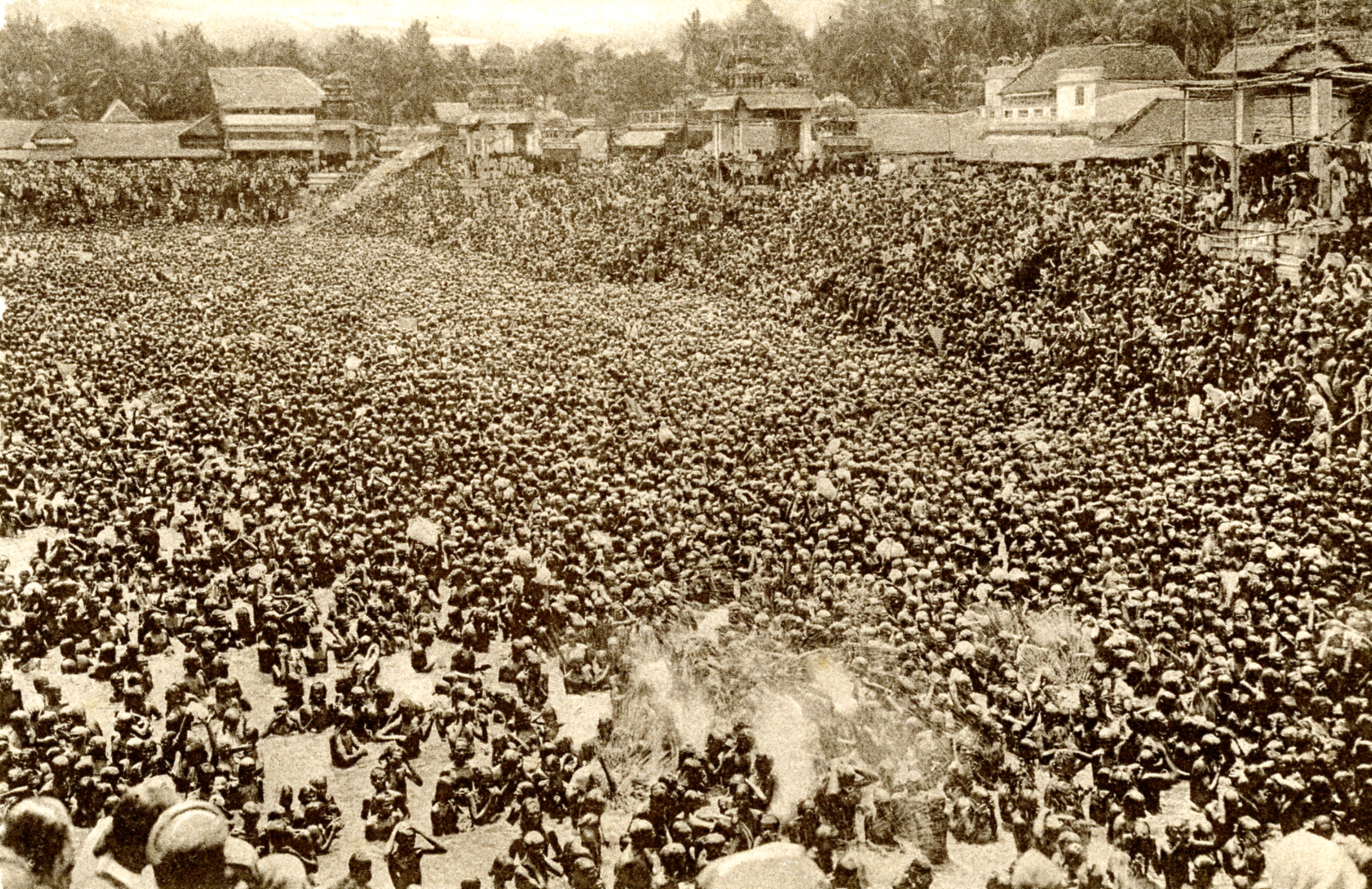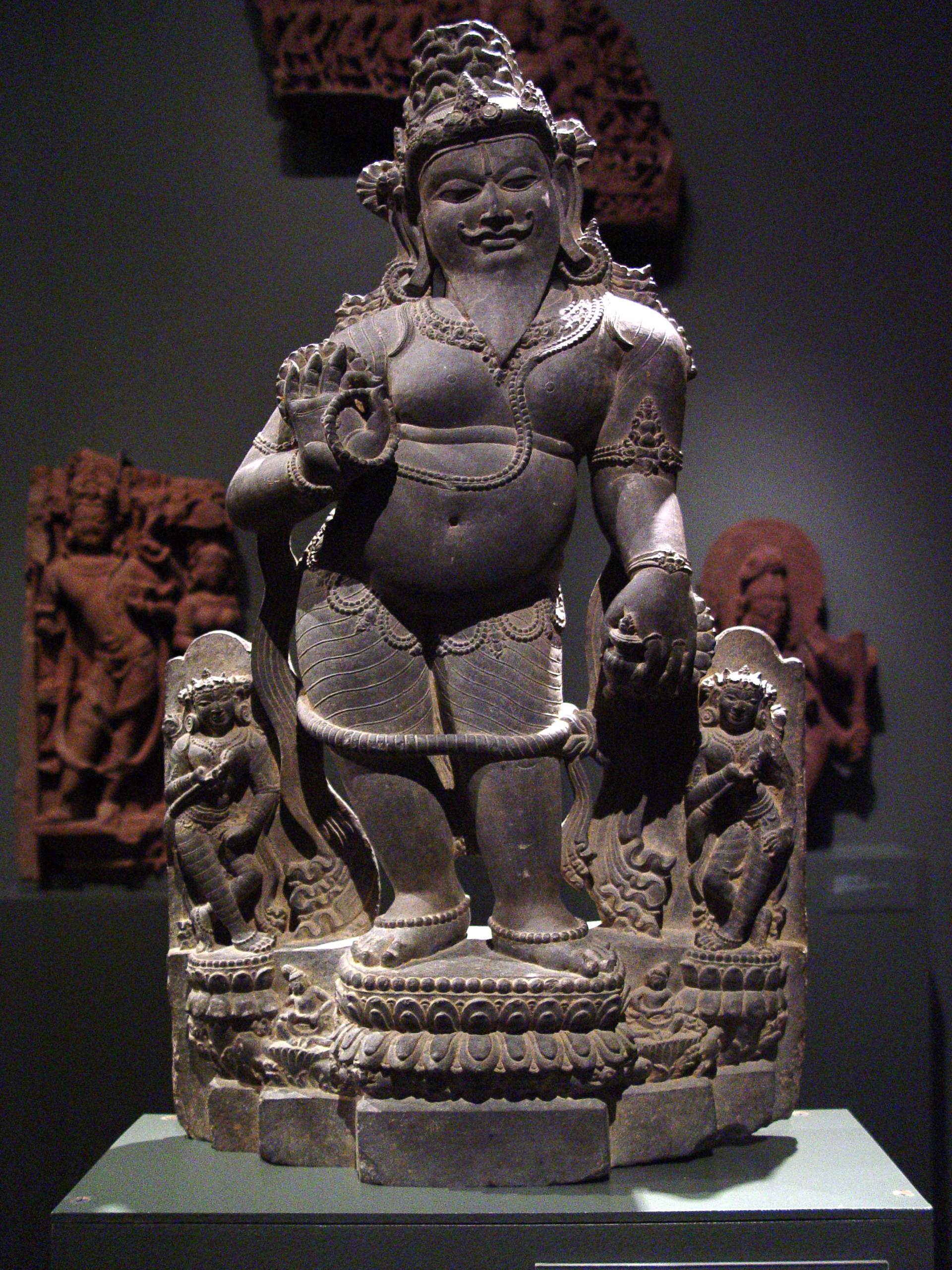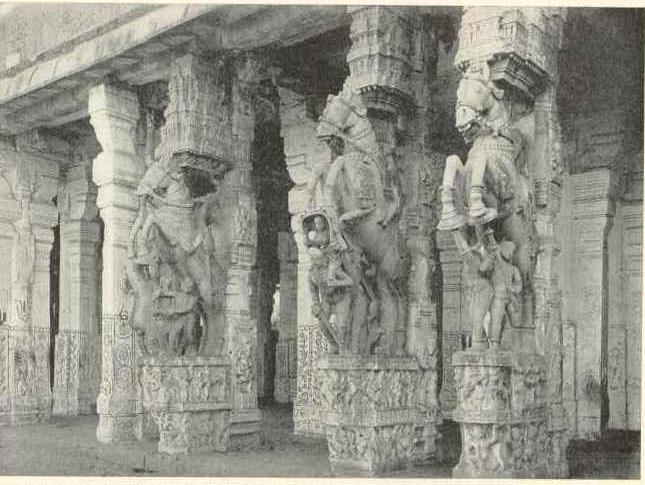|
Kumbakonam
Kumbakonam (formerly spelt as Coombaconum or Combaconum), or Kudanthai, is a city municipal corporation in the Thanjavur district in the States of India, Indian state of Tamil Nadu. It is located from Thanjavur and from Chennai and is the headquarters of the Kumbakonam taluk of Thanjavur district. It is the second largest city in the district after Thanjavur. The city is bounded by two rivers, the Kaveri River to the north and Arasalar River to the south. Kumbakonam is known as a "Temple City" due to the prevalence of a number of Hindu temple, temples here and is noted for its Mahamaham festival, which happens once in 12 years, attracting people from all over the country. Kumbakonam dates back to the Sangam period and was ruled by the Early Cholas, Pallavas, Mutharaiyar dynasty, Medieval Cholas, Later Cholas, Pandyas, the Vijayanagara Empire, Madurai Nayaks, Thanjavur Nayaks and the Thanjavur Marathas. It rose to be a prominent town between the seventh and ninth centuries AD, ... [...More Info...] [...Related Items...] OR: [Wikipedia] [Google] [Baidu] |
Mahamaham Festival
''Mahamaham'', also known as ''Mahamagham'' or ''Mamangam'', is a Hindu festival celebrated every 12 years in the Mahamaham tank located in the city of Kumbakonam in Tamil Nadu in the south of India. This 20-acre square tank surrounded by Shiva mandapams is believed by Tamil Hindus to be ancient, and the holy confluence of nine Indian river goddesses: Ganga, Yamuna, Sarasvati, Narmada, Godavari, Krishna, Tungabhadra, Kaveri, and Sarayu, states Diana Eck – a professor of Comparative Religion and Indian Studies. On the day of the Mahamaham festival, the river goddesses and Shiva gather here to rejuvenate their waters, according to a legend in the ''Periya Purana''. The Hindus consider taking a pilgrimage and holy dip at the Mahamaham tirtha on the day of Mahamaham festival as sacred. The event attracts chariot processions, street fairs and classical dance performances in temple mandapas. The 12-year cycle Mahamaham festival in Tamil Nadu is observed in the Hindu calendar mont ... [...More Info...] [...Related Items...] OR: [Wikipedia] [Google] [Baidu] |
Thanjavur District
Thanjavur District is one of the Districts of Tamil Nadu, 38 districts of the States and territories of India, state of Tamil Nadu, in southeastern India. Its headquarters is Thanjavur (Tanjore) . The district is located in the delta of the Cauvery River and is mostly agrarian. Geography The district is located at in Central Tamil Nadu bounded on the northeast by Mayiladuthurai district, on the east by Tiruvarur District, on the south by the Palk Strait of Bay of Bengal on the west by Pudukkottai District and Tiruchirappalli District, Tiruchirappalli, small border with Cuddalore district, Cuddalore on the northeast and on the north by the river Kollidam, across which lie part of Tiruchirappalli District, Tiruchirappalli, and Ariyalur district, Ariyalur districts. Demographics According to the 2011 census of India, 2011 census, Thanjavur district had a population of 2,405,890 with a sex-ratio of 1,035 females for every 1,000 males, much above the national average of 92 ... [...More Info...] [...Related Items...] OR: [Wikipedia] [Google] [Baidu] |
Thanjavur
Thanjavur (), also known as Thanjai, previously known as Tanjore, Pletcher 2010, p. 195 is a city in the Indian state of Tamil Nadu. It is the 12th biggest city in Tamil Nadu. Thanjavur is an important center of southern Indian religion, art, and architecture. Most of the Great Living Chola Temples, which are UNESCO World Heritage Monuments, are located in and around Thanjavur. The foremost among these, the Brihadisvara Temple, built by the Chola emperor Rajaraja I, is located in the centre of the city. This temple has one of the largest bull statues (called Nandi) in India carved out of a single granite rock. Thanjavur is also home to Tanjore painting, a painting style unique to the region. Thanjavur is the headquarters of the Thanjavur District. The city is an important agricultural centre located in the Kaveri Delta and is known as the ''Rice bowl of Tamil Nadu''. Thanjavur is administered by a municipal corporation covering an area of and had a population of 222,943 ... [...More Info...] [...Related Items...] OR: [Wikipedia] [Google] [Baidu] |
Pandya
The Pandya dynasty (), also referred to as the Pandyas of Madurai, was an ancient Tamil dynasty of South India, and among the four great kingdoms of Tamilakam, the other three being the Pallavas, the Cholas and the Cheras. Existing since at least the 4th to 3rd centuries BCE, the dynasty passed through two periods of imperial dominance, the 6th to 10th centuries CE, and under the 'Later Pandyas' (13th to 14th centuries CE). Under Jatavarman Sundara Pandyan I and Maravarman Kulasekara Pandyan I, the Pandyas ruled extensive territories including regions of present-day South India and northern Sri Lanka through vassal states subject to Madurai. The Pandya dynasty is the longest ruling dynasty in the world. The rulers of the three Tamil dynasties were referred to as the " three crowned rulers (the mu-ventar) of the Tamil Region" in the southern part of India. The origin and the timeline of the Pandya dynasty are difficult to establish. The early Pandya chieftains ruled ... [...More Info...] [...Related Items...] OR: [Wikipedia] [Google] [Baidu] |
Medieval Cholas
The Chola Empire, which is often referred to as the Imperial Cholas, was a medieval thalassocratic empire based in southern India that was ruled by the Chola dynasty, and comprised overseas dominions, protectorates and spheres of influence in southeast Asia. The power and the prestige the Cholas had among political powers in South, Southeast, and East Asia at its peak is evident in their expeditions to the Ganges, naval raids on cities of the Srivijaya Empire on the island of Sumatra, and their repeated embassies to China. K. A. Nilakanta Sastri, ''A History of South India'', p. 158 The Chola fleet represented the peak of ancient Indian maritime capacity. Around 1070, the Cholas began to lose almost all of their overseas territories but the later Cholas (1070–1279) continued to rule portions of southern India. The Chola empire went into decline at the beginning of the 13th century with the rise of the Pandyan dynasty, which ultimately caused the Chola's downfall. K. A. N ... [...More Info...] [...Related Items...] OR: [Wikipedia] [Google] [Baidu] |
Arasalar River
The river Arasalar is a river that flows through Tamil Nadu and Pudducherry, and a distributary of Kaveri river which splits into 5 different rivers when it enters into Thanjavur district from Trichy. It separates from river Kaveri in the place near Pullambadi where the Kaveri is stopped by Lower Anaicut and from Thiruvaiyaru. The river is one of the seven rivers that run in the Karaikal region of Puducherry. River pollution Findings of Central Pollution Control Board had revealed that the river is polluted by high concentrations of nitrate and chromium due to mixing of sewage water into the river stream and industrial activities in 2013. The river has the highest arsenic concentration among all rivers in India (13.33 μg/L at Porakudi). River course The river takes is course from Thiruvaiyaru of Thanjavur where it branches from Kaveri, travels through Kumbakonam. It runs a distance of 11.2 km before emptying itself into the sea of Bay of Bengal at Karaikal, e ... [...More Info...] [...Related Items...] OR: [Wikipedia] [Google] [Baidu] |
Sangam Period
The Sangam literature ( Tamil: சங்க இலக்கியம், ''caṅka ilakkiyam''), historically known as 'the poetry of the noble ones' ( Tamil: சான்றோர் செய்யுள், ''Cāṉṟōr ceyyuḷ''), connotes the early classical Tamil literature and is the earliest known literature of South India. The Tamil tradition links it to legendary literary gatherings around Madurai in the ancient Pandya kingdom. It is generally accepted by most scholars that the historical Sangam literature era, also known as the Sangam period, spanned from 100 BCE to 250 CE, on the basis of linguistic, epigraphic, archaeological, numismatic and historical data; though some scholars give a broader range of 300 BCE to 300 CE. The Eighteen Greater Texts (Patiṉeṇmēlkaṇakku), along with the Tamil grammar work Tolkappiyam, are collectively considered as Sangam literature. These texts are classified into the Ettuttokai (Eight Anthologies) and Pattupattu (T ... [...More Info...] [...Related Items...] OR: [Wikipedia] [Google] [Baidu] |
Vijayanagara Empire
The Vijayanagara Empire, also known as the Karnata Kingdom, was a late medieval Hinduism, Hindu empire that ruled much of southern India. It was established in 1336 by the brothers Harihara I and Bukka Raya I of the Sangama dynasty, belonging to the Yadava clan of Lunar dynasty, Chandravamsa lineage. The empire rose to prominence as a culmination of attempts by the southern powers to ward off Muslim invasions of India, Muslim invasions by the end of the 13th century. At its peak in the early 16th century under Krishnadevaraya, it subjugated almost all of Southern India's ruling dynasties and pushed the Deccan sultanates beyond the Tungabhadra River, Tungabhadra-Krishna River, Krishna River doab region, in addition to annexing the Gajapati Empire (Odisha) up to the Krishna River, becoming one of the most prominent states in India. The empire's territory covered most of the lands of the modern-day Indian states of Karnataka, Andhra Pradesh, Tamil Nadu, Kerala, Goa, and some pa ... [...More Info...] [...Related Items...] OR: [Wikipedia] [Google] [Baidu] |
Thanjavur Nayaks
The Thanjavur Nayak dynasty (or Thanjavur Nayak kingdom) were the rulers of Thanjavur in the 15th and 17th centuries founded by Sevappa Nayaka. The Nayaks, who were Telugu Balijas,* * * * * * * * * were originally appointed as provincial governors by the Vijayanagara Emperor in the 15th century, who divided the territory into Nayak kingdoms which were Madurai, Thanjavur and Gingee. In the mid-15th century they became an independent kingdom, although they continued their alliance with the Vijayanagara Empire. The Thanjavur Nayaks were notable for their patronage of literature and the arts. Origins of Nayak rule With the end of the Chola Empire in 1279, Thanjavur was ruled by a branch of Chola dynasty, until the Vijayanagara Empire conquered all of southern India by the late 14th century. In 1532 CE, Achyuta Deva Raya, the brother and successor of Krishna Deva Raya of Vijayanagara Empire, granted Sevappa Nayak, the governor of Thanjavur, the permission to esta ... [...More Info...] [...Related Items...] OR: [Wikipedia] [Google] [Baidu] |






